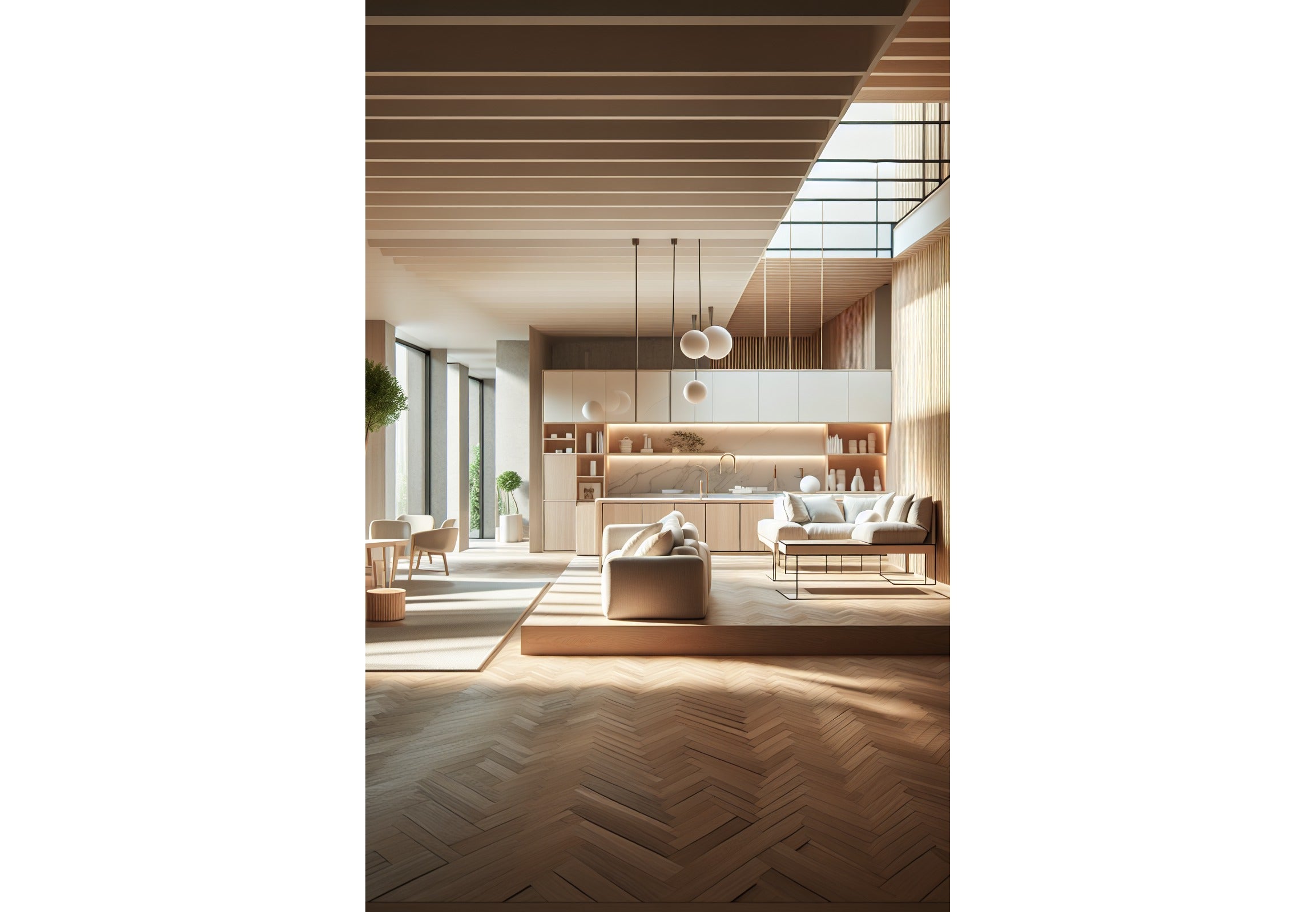Interior design is an art that seamlessly integrates the principles of interior design, focusing on aesthetics, functionality, and comfort. This article aims to provide insights into creating a balanced interior design that harmoniously blends these three elements, adhering to the foundational principles of interior design that are essential to the overall design process.
A. Understanding the Concept of Balance in Interior Design
In the realm of interior design, achieving balance in interior design is of paramount importance. Whether it's creating balance through symmetrical balance in interior design, where elements are mirrored on either side of a central axis, or employing radial balance in interior design, where elements radiate from a central point, the careful distribution of visual weight throughout a room is crucial. These methods lead to different types of balance, each fostering a sense of stability and harmony within the space, making it a pleasure to inhabit.
A1. Aspects of Balance in Interior Design
There are three main types of balance in interior design:
- Symmetrical Balance: This particular form of balance, known as symmetrical balance, is accomplished by strategically placing similar objects on either side of a central line or axis. This method of arrangement gives a sense of orderliness and formality to a space, creating a visually pleasing and harmonious environment.
- Asymmetrical Balance: This type of balance, referred to as asymmetrical balance, involves the careful arrangement of objects that differ in size, shape, and weight in order to achieve a state of equilibrium. This approach provides a more relaxed and eclectic feel to a space, offering a unique and interesting visual experience.
- Radial Balance: This is a unique form of balance that begins from the center of the room and extends outwards. Often, this involves the use of circular forms or patterns. This type of balance creates a sense of radiating harmony that can be both visually striking and calming.
B. The Role of Functionality in Interior Design
In the realm of interior design, functionality in design assumes a pivotal role. This crucial aspect necessitates a thoughtful consideration of the intended purpose of each individual room, followed by the careful design of the space to maximize its potential use. Functionality in design is not merely about aesthetics, but it also involves the effective utilization of space. Achieving this can be done through strategic placement of furniture, which not only enhances the visual appeal but also improves the flow and accessibility within the room. Additionally, incorporating smart storage solutions is another key element in achieving functionality. These solutions can help in reducing clutter, thereby making the space more organized and efficient. Thus, functionality in interior design is a harmonious blend of purposeful design, effective space utilization, strategic furniture placement, and smart storage solutions.
B1. Emphasizing Functionality in Interior Design
To emphasize functionality, consider the following:
- Space Utilization: It's of utmost importance to ensure that every nook and cranny in your home is utilized effectively and has a specific purpose. This means that you should avoid overcrowding your rooms with unnecessary items, but also avoid leaving too much open space that could otherwise be used more efficiently.
- Furniture Placement: The placement of furniture within your rooms should be done strategically. This not only facilitates easy movement around the room, but it also helps to fulfill the room's intended purpose. Whether it's a living room, bedroom, or kitchen, each piece of furniture should contribute to the overall functionality of the space.
- Storage Solutions: Implementing efficient storage solutions is another key aspect of maintaining an organized home. By having a place for everything, you can keep your spaces organized and free from clutter. This not only makes your home look cleaner and more appealing, but it also contributes significantly to the overall functionality and usability of the space.
C. The Importance of Comfort in Interior Design
In the realm of interior design, the importance of comfort cannot be overstated. Comfort in interior design is a vital aspect that significantly contributes to the overall ambiance of a space. When an interior is comfortable, it fosters a sense of relaxation, thereby enhancing the overall experience of the space for its occupants. The creation of comfort within a space can be achieved through several means. One of these is the appropriate selection of furniture, which should not only be aesthetically pleasing but also provide the necessary support and ease of use. Additionally, thoughtful lighting plays a crucial role. It should be neither too harsh nor too dim, but just right to create a warm and inviting atmosphere. Lastly, the use of harmonious color schemes can greatly contribute to the comfort of a space. The right blend of colors can evoke feelings of calmness and tranquility, further enhancing the comfort level of the interior.
C1. How to Create Comfort in Interior Design
Here are a few strategies for creating comfort:
- Furniture Selection: Choose furniture that is not only aesthetically pleasing but also comfortable to use.
- Lighting: Good lighting is essential for a comfortable space. Make sure to use a mix of task, ambient, and accent lighting.
- Color Schemes: Colors significantly affect our mood and emotions. Use calming colors to create a relaxing atmosphere.
D. Balancing Functionality and Comfort with Style
Achieving the perfect equilibrium in design, a principle that delicately balances functionality, comfort, and style, can indeed present a formidable challenge. Yet, with meticulous planning and thoughtful consideration, creating balance becomes entirely feasible to craft a space that not only serves its practical purpose but also provides comfort and pleases the eye with its aesthetic appeal.
D1. How to Achieve a Balanced Interior Design
Here are a few tips to achieve a balanced interior design:
- Symmetry and Proportion: It's important to utilize symmetry and proportion in your design to establish a sense of balance. This involves ensuring that the visual weight, or the perceived heaviness of objects, is evenly distributed throughout the space. This can create a harmonious and pleasing aesthetic.
- Contrast and Variation: Incorporate contrast and variation into your design. This can be achieved by using a diverse range of colors, textures, and materials. By doing so, you can add a level of interest and depth to the space, preventing it from appearing monotonous or dull.
- Layering: Consider layering different elements within the space. This could include furniture, accessories, and lighting fixtures. Layering can add dimension and depth to the space, making it feel more dynamic and visually engaging.
- Scale and Size: Pay close attention to the scale and size of the furniture and accessories you choose. Pieces that are too large or too small can disrupt the balance of the space, making it feel awkward or uncomfortable. It's crucial to select items that are proportionate to the space and each other to maintain a balanced and cohesive design.
A balanced interior design is a delicate equilibrium that harmoniously blends three key elements: functionality, comfort, and style. Achieving this balance in interior design in a room is not a simple task; it requires meticulous planning, a comprehensive understanding of design principles, and a keen, discerning eye for detail. The process may be complex and demanding, but the outcome is undeniably rewarding. The result is a balanced room that is not only aesthetically pleasing and beautiful to the eye, but also practical and comfortable, serving its intended purpose while providing a sense of ease and relaxation.




































Comment